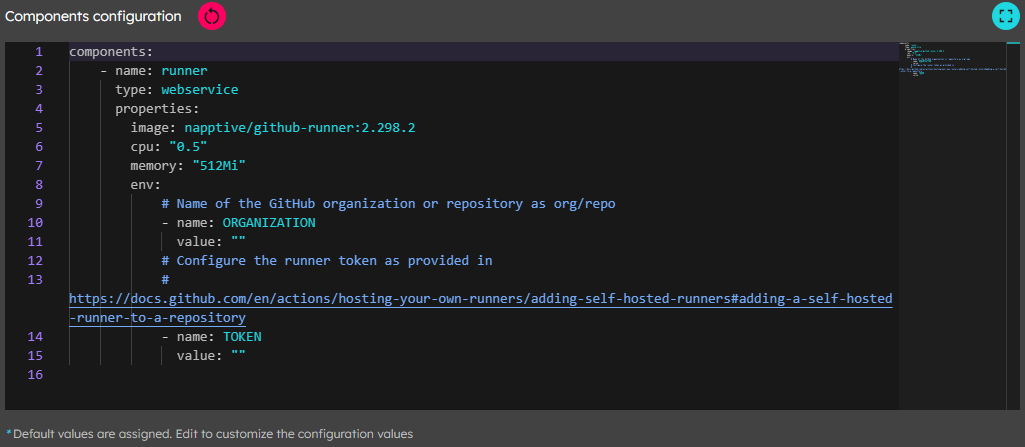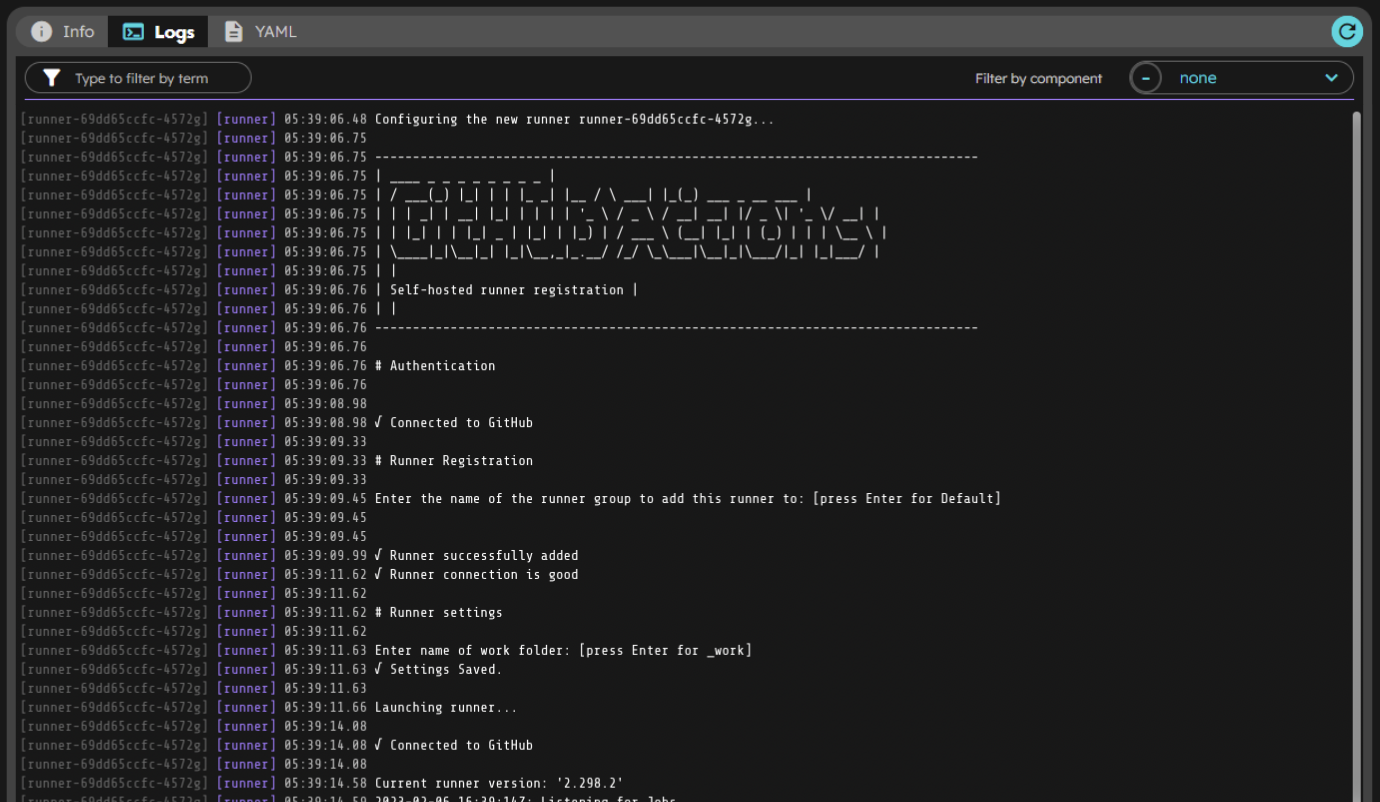Deploying GitHub runner
GitHub runner is an application to add a self-hosted runners to run Jobs in GitHub actions
Self-hosted runners offer more control of hardware, operating system, and software tools than GitHub-hosted runners provide. With self-hosted runners, you can create custom hardware configurations that meet your needs with processing power or memory to run larger jobs, install software available on your local network, and choose an operating system not offered by GitHub-hosted runners. Self-hosted runners can be physical, virtual, in a container, on-premises, or in a cloud.
In this tutorial you will learn how to deploy GitHub runner to be used in your GitHub actions.
Pre-requirements
- A playground account. Follow the Signup process if you would like to create one.
Deploying Github-runner
To deploy the application, open the catalog by clicking on the upper left hand corner: ![]()
Then, select the github-runner application in the Napptive namespace and click Deploy.

Fill environment variables in the components configuration dialog

-
ORGANIZATION:
A GitHub runner can be added in such a way that is visible for all repositories in your organization, or it can be restricted to a particular repository. To set up a runner for the whole organization, set this variable with
<org_name>; to set up a runner for a single repository use<org_name>/<repoName>. -
TOKEN
The runner requires a token that is generated in GitHub to create the link with your organization or repository. Follow GitHub instructions to configure a runner and get the token from the Configure section.
Runner Image: Linux Architecture: x64__
Once the application is deployed, check the logs to ensure that it is configured correctly

or visit the GitHub settings section and check the runner status

At this moment, your own GitHub runner is deployed and ready to be used in any of your GitHub Actions workflows. To do this, include the following line in your workflows:
runs-on: napptive